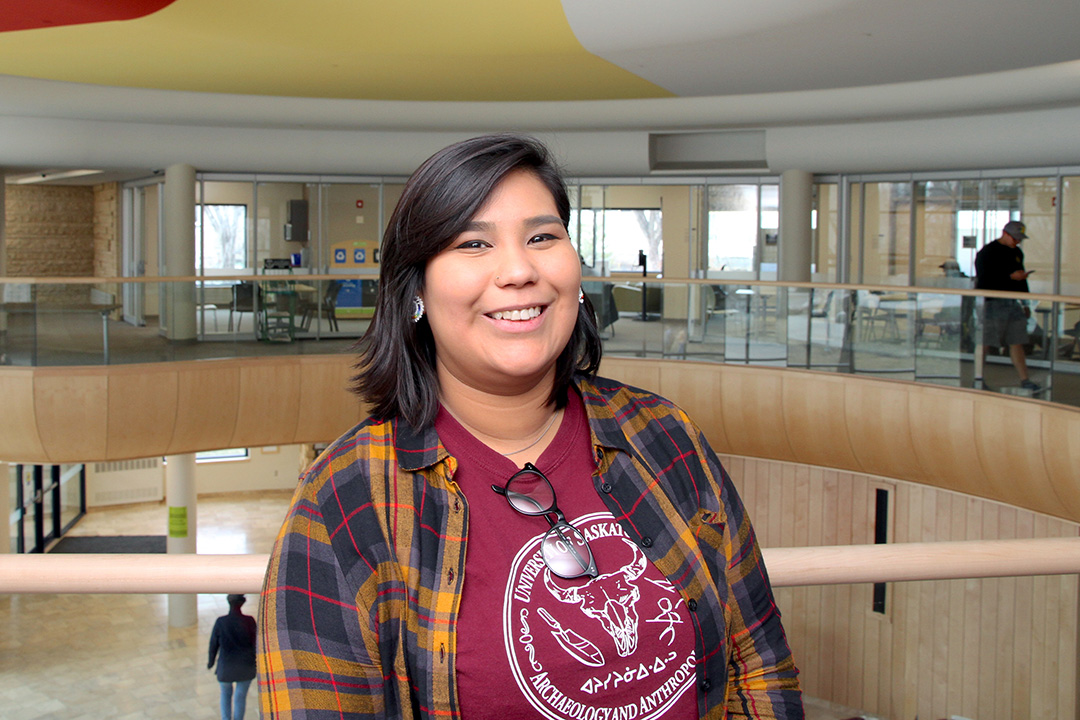
Constant’s professional path leads to archaeology
Follow your dreams. That’s the lesson that Honey Constant will take with her as she walks across the stage at Merlis Belsher Place during Spring Convocation.
By Chris MorinConstant knew she was always destined to work in the field of archaeology. And while her academic journey has taken several turns, it’s a combined passion for science and culture that has motivated her to succeed. It was during a family visit to Ottawa when she was 16 years old that Constant had the epiphany that would shape her professional path.
“My cousin and I went to every museum we could find, but it was while we were at the Canadian Museum of History when I remember thinking ‘what can I do to work here?’” said Constant, who started at the University of Saskatchewan (USask) right out of high school. “I knew I was going to be an archaeologist even before I started my classes.”
But after diving into a full course load during her first two years, Constant started to wonder if she was in over her head.
“My mom sat me down and we figured out that I needed a break,” said Constant. “So, I went to SIAST (now Saskatchewan Polytechnic) and got my certificate to be an esthetician. And when I was done that I returned to USask and I was ready to go. Once I started taking my third- and fourth-year classes, I began to enjoy school here a lot more because I was connecting my classes to my culture.”
Returning to her academic work with a newfound vigour, Constant became involved with the International Student and Study Abroad Centre (ISSAC) in the Building Bridges program, bringing USask students together for intercultural programming and social events. She also began working at Wanuskewin Heritage Park as a senior guide, something she attributes to strengthening her cultural connections.
“After I had done the field school for USask out there, I saw a job opportunity and I applied during my fourth year,” said Constant, who will graduate with a Bachelor of Science at June’s Spring Convocation. “I’ve been balancing work and school at the same time now, and it can be difficult, but it’s also quite helpful because they both address the same topics.
“I grew up with culture, and my grandparents have traditional knowledge they share with us. We are from Sturgeon Lake First Nation, but I lived a fairly urban lifestyle and didn’t get to connect to the land and the teachings until I got older,” she continued. “I felt like I was missing out on so much of the Plains Cree worldview because I wasn’t connected with the language beyond basic words and understanding. So, when I first went to Wanuskewin, I was amazed. It was powerful for me, because the culture was portrayed in an authentic way.”
When she starts her master’s program this fall at USask under the guidance of archaeology professor Dr. Ernie Walker (PhD), Constant will be developing archaeological programming for Wanuskewin from an Indigenous perspective. While continuing her work as a guide, she aims to continue her research, and ultimately help teach others, and herself, about Plains Cree culture.
“I use archaeology as a way to reconnect with my culture,” said Constant. “Some of my family members had a bad experience with residential schools and felt that I would have an easier time if I didn’t speak Cree. But now I am slowly learning to snare rabbits. My family is teaching me traditional crafts and encouraging me to practice Cree. It’s nice to learn the history and to be able to share what I do.”

